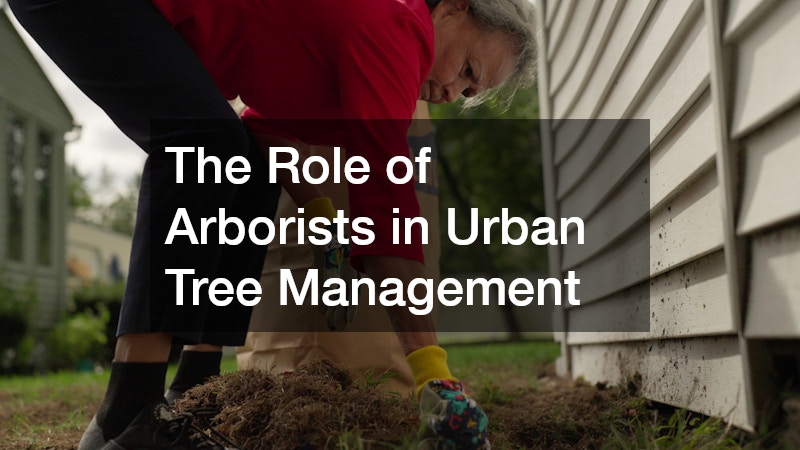
Urban environments rely on the expertise of arborists to manage and maintain trees in a way that balances public safety, environmental health and aesthetic value. As cities grow and green spaces become more essential, professional tree care becomes a critical part of urban planning and infrastructure.
Arborists play a key role in helping trees thrive despite the challenges posed by compacted soils, limited space, pollution and increasing development. Their knowledge ensures that trees are not only planted in the right places but also cared for throughout their lives to maximise longevity and minimise risk.
Assessing Tree Health and Structure
One of the primary responsibilities of arborists is evaluating tree health. Trees in urban areas are exposed to harsh conditions including car exhaust, concrete surfaces and interrupted root zones. Arborists assess signs of disease, decay, pest infestations and physical damage, often using a mix of visual inspections and specialised tools.
Early detection of issues can prevent small problems from becoming large hazards. For instance, an arborist might identify a fungal infection in its early stages or recommend pruning before a weakened limb falls during a storm. Tree structure is also assessed to determine whether it poses a threat to nearby buildings, powerlines or pedestrians.
Through regular monitoring, arborists help councils, developers and private landowners maintain healthy trees that contribute positively to the urban landscape. Their reports often inform decisions on whether to preserve, prune or remove trees based on safety, health and heritage value.
Strategic Pruning and Maintenance
Tree pruning is more than cutting off branches. It’s a science that requires careful planning and execution. Arborists use selective pruning to improve tree structure, remove deadwood and reduce risk during extreme weather. The goal is to enhance the tree’s shape, strength and stability while supporting long-term health.
Urban tree maintenance also involves clearing sightlines near roads and walkways, reducing conflict with buildings and allowing light to reach public areas. Without proper care, overgrown trees can obstruct traffic signs, interfere with utilities or become top-heavy and unstable.
All pruning is carried out with a deep understanding of tree biology. Poor practices like topping or over-pruning can weaken a tree and shorten its lifespan. Arborists are trained to apply techniques that promote healing and prevent future damage, ensuring the tree can recover and continue to grow safely.
Managing Tree Risk and Public Safety
In populated environments, tree safety is a serious concern. Falling branches or uprooted trees can damage property and injure people. Arborists are responsible for identifying and managing these risks. They assess factors such as structural defects, root damage, lean direction and proximity to footpaths or roads.
In cases where a tree poses immediate danger, arborists may recommend removal. However, removal is often considered a last resort. Wherever possible, they explore methods to mitigate risk without losing the tree, such as cabling limbs or reducing canopy weight.
For councils and property managers, having a qualified arborist inspect and document urban trees can protect against liability in the event of tree failure. These inspections provide a legal record that proactive care was taken and risks were addressed responsibly.
Supporting Urban Biodiversity and Climate Resilience
Urban trees do more than provide shade and beauty. They reduce air pollution, absorb carbon dioxide, support native wildlife and help manage stormwater runoff. Arborists contribute to these environmental benefits by advising on the best tree species to plant in each location based on local conditions and long-term suitability.
In growing cities, not all green space is equal. Arborists ensure that tree planting programs are designed for diversity, resilience and sustainability. By choosing species that are drought-tolerant or pest-resistant, they help create an urban forest that can adapt to changing climate conditions.
Proper tree selection also reduces the likelihood of future issues. A tree that grows too large for its setting or suffers from shallow roots can become a costly problem. Arborists help avoid these outcomes by recommending the right tree for the right place from the outset.
Tree Preservation During Development
As urban development continues to reshape communities, preserving existing trees has become a top priority. Arborists are often involved in planning and construction projects to ensure trees are protected during excavation, soil compaction and structural work.
They may install protective fencing, advise on root zones and work with engineers to design infrastructure that accommodates trees. In some cases, they monitor tree health throughout construction to ensure no lasting damage occurs.
Many councils now require arborist reports as part of the planning application process, especially when development is proposed near significant or heritage-listed trees. These reports include detailed assessments and recommendations that guide builders and regulators alike.
Urban tree management is a complex task that demands experience, science and care. Arborists provide the knowledge and hands-on expertise needed to ensure trees in cities are healthy, safe and beneficial to the environment.
Their role extends beyond pruning and planting. From risk assessment to biodiversity planning, arborists are at the centre of creating urban spaces that are liveable, green and resilient.
With the increasing value placed on sustainable development and climate action, the services of professional arborists are more important than ever. Their work ensures that trees continue to thrive alongside the growth of our cities and towns.





